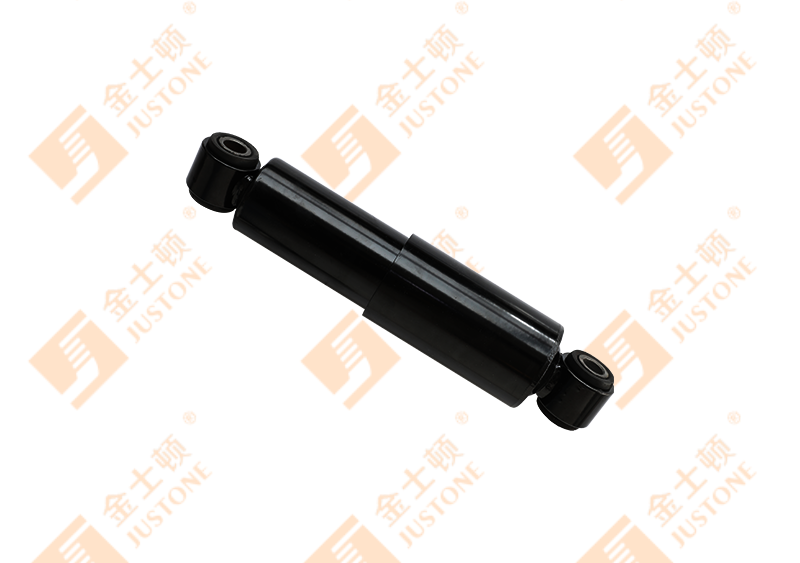Didn't find a product that suits you?
Contact us for the latest news.
Shock absorbers play a critical role in the performance and safety of heavy trucks. They are responsible for controlling the movement of the suspension system, ensuring tire contact with the road, improving ride comfort, and reducing wear on other vehicle components. However, like all mechanical parts, shock absorbers wear out over time due to constant use, exposure to harsh conditions, and heavy loads. Knowing how to determine when they need replacement is essential for maintaining vehicle stability, driver safety, and cargo integrity.
Here are several key indicators that suggest it may be time to replace the Heavy Truck Chassis Shock Absorbers :
1. Excessive Bouncing or Unstable Ride
One of the most noticeable signs of worn-out shock absorbers is an excessively bouncy or unstable ride. If your truck continues to bounce multiple times after hitting a bump or sways significantly during turns, the shocks are likely no longer effectively damping the suspension movement. This can lead to poor handling and reduced control, especially at high speeds or on uneven roads.
2. Uneven Tire Wear
Worn shock absorbers can cause tires to lose consistent contact with the road surface. This results in uneven tire wear patterns, such as cupping or scalloping—where small dips appear around the tire tread. Uneven tire wear not only shortens tire life but also affects braking performance and fuel efficiency.
3. Vehicle Dives During Braking or Squats During Acceleration
Healthy shock absorbers help maintain the truck’s posture during acceleration and deceleration. If you notice the front end diving sharply when braking or the rear squatting heavily when accelerating, it’s a sign that the shocks are not properly controlling weight transfer. This can increase stopping distances and reduce overall stability.
4. Oil Leaks or Visible Damage
Visually inspecting the shock absorbers is one of the most direct ways to assess their condition. A thin film of oil on the surface may be normal, but visible fluid leakage—especially dripping—is a clear indication that the internal seals are failing. Additionally, check for dents, cracks, or broken mounts, which can compromise the structural integrity of the unit.
5. Increased Stopping Distance
Studies have shown that worn shocks can increase stopping distance by affecting tire grip. When shocks are not functioning correctly, the tires may not stay firmly planted on the road, especially under hard braking. This poses a serious safety risk, particularly for large commercial vehicles carrying heavy loads.
6. Vibration or Noise from the Suspension
Unusual vibrations felt through the steering wheel or floorboard, along with knocking or clunking noises coming from the suspension, may point to worn or damaged shocks. These sounds often occur when internal components are loose or the piston is not moving smoothly within the cylinder.
7. Mileage and Age
Even if there are no obvious symptoms, shock absorbers have a finite lifespan. Most manufacturers recommend replacing them every 50,000 to 100,000 miles , depending on driving conditions and load factors. Trucks operating in rough terrain, extreme weather, or consistently carrying heavy loads may require more frequent inspections and replacements.
8. Failed “Bounce Test”
A simple test you can perform is the bounce test :
Push down firmly on one corner of the truck bed or cab.
Release it quickly and observe how the vehicle reacts.
If the truck bounces more than once after release, the shocks are likely worn and need replacement.
This method isn’t foolproof, especially for modern air suspension systems, but it can provide a quick indication of shock absorber health.
9. Poor Handling or Reduced Driver Comfort
If the driver reports a decline in ride quality—such as feeling every bump, experiencing excessive body roll, or having difficulty keeping the truck steady—this could be due to degraded shock absorbers. Poorly performing shocks make long-haul driving uncomfortable and fatiguing.
10. Suspension Bottoming Out
When shocks are worn, the suspension may bottom out more easily, especially when driving over large bumps or potholes. This not only damages the suspension components but also risks damaging the undercarriage and frame of the truck.
Regular inspection and timely replacement of Heavy Truck Chassis Shock Absorbers are crucial for maintaining optimal performance, safety, and longevity of the vehicle. Ignoring signs of wear can lead to increased maintenance costs, higher accident risks, and reduced operational efficiency. If any of the above symptoms are present, it’s important to have the shocks inspected by a qualified technician and replaced if necessary.
By staying proactive about shock absorber maintenance, fleet managers and truck operators can ensure safer roads, better fuel economy, and a more comfortable ride for drivers.
